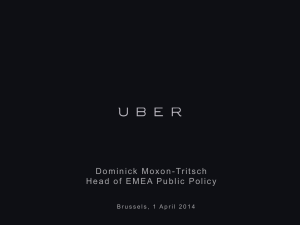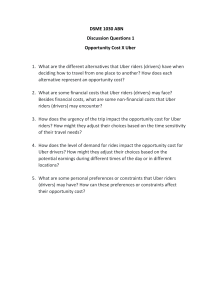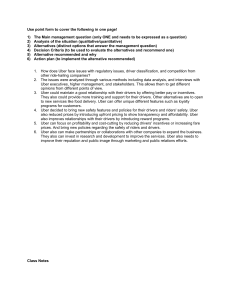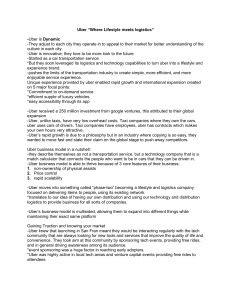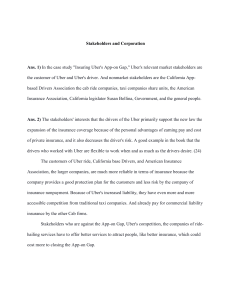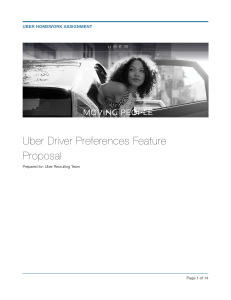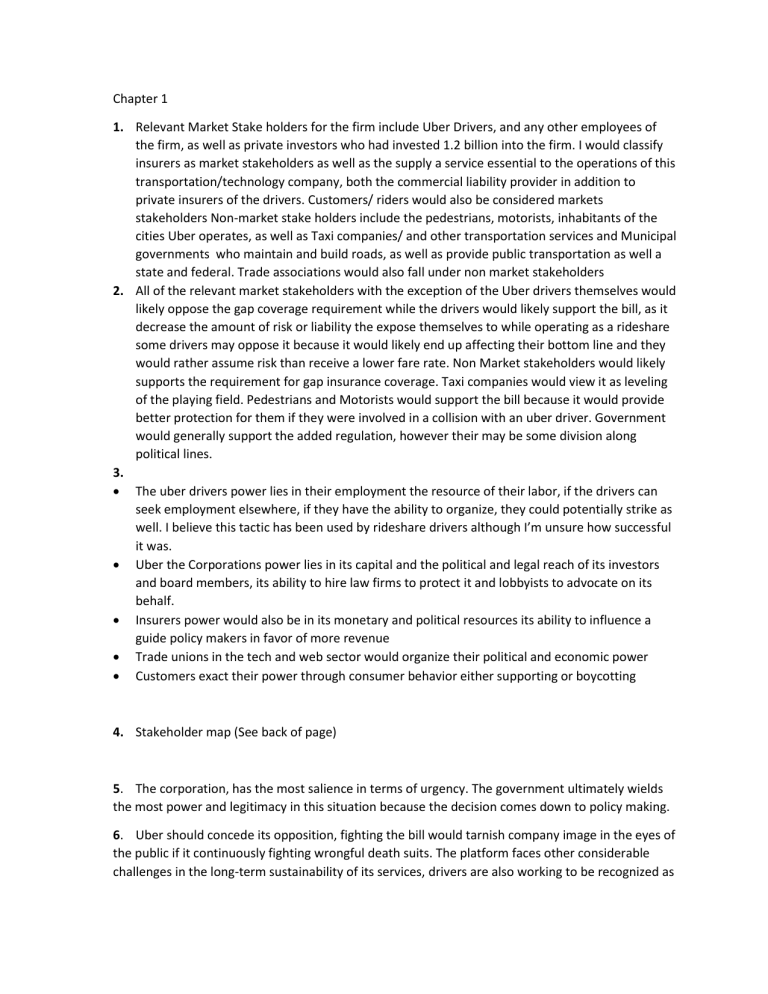
Chapter 1 1. Relevant Market Stake holders for the firm include Uber Drivers, and any other employees of the firm, as well as private investors who had invested 1.2 billion into the firm. I would classify insurers as market stakeholders as well as the supply a service essential to the operations of this transportation/technology company, both the commercial liability provider in addition to private insurers of the drivers. Customers/ riders would also be considered markets stakeholders Non-market stake holders include the pedestrians, motorists, inhabitants of the cities Uber operates, as well as Taxi companies/ and other transportation services and Municipal governments who maintain and build roads, as well as provide public transportation as well a state and federal. Trade associations would also fall under non market stakeholders 2. All of the relevant market stakeholders with the exception of the Uber drivers themselves would likely oppose the gap coverage requirement while the drivers would likely support the bill, as it decrease the amount of risk or liability the expose themselves to while operating as a rideshare some drivers may oppose it because it would likely end up affecting their bottom line and they would rather assume risk than receive a lower fare rate. Non Market stakeholders would likely supports the requirement for gap insurance coverage. Taxi companies would view it as leveling of the playing field. Pedestrians and Motorists would support the bill because it would provide better protection for them if they were involved in a collision with an uber driver. Government would generally support the added regulation, however their may be some division along political lines. 3. The uber drivers power lies in their employment the resource of their labor, if the drivers can seek employment elsewhere, if they have the ability to organize, they could potentially strike as well. I believe this tactic has been used by rideshare drivers although I’m unsure how successful it was. Uber the Corporations power lies in its capital and the political and legal reach of its investors and board members, its ability to hire law firms to protect it and lobbyists to advocate on its behalf. Insurers power would also be in its monetary and political resources its ability to influence a guide policy makers in favor of more revenue Trade unions in the tech and web sector would organize their political and economic power Customers exact their power through consumer behavior either supporting or boycotting 4. Stakeholder map (See back of page) 5. The corporation, has the most salience in terms of urgency. The government ultimately wields the most power and legitimacy in this situation because the decision comes down to policy making. 6. Uber should concede its opposition, fighting the bill would tarnish company image in the eyes of the public if it continuously fighting wrongful death suits. The platform faces other considerable challenges in the long-term sustainability of its services, drivers are also working to be recognized as employees not just contractors, the corporation needs to maintain its operations and market share until driverless vehicles become viable.
